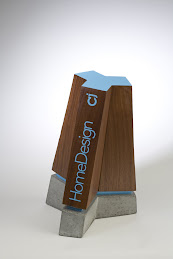The table was demolded after 2 days. I ground the surface with a diamond cup wheel to get through all the surface paste and remove any trowel or plastic marks. White and green glass pieces were broadcast in opposite arcs across the surface.
Now that the surface is flat, it will get ground through 400 grit before filling. I will wait a couple days before flipping it over and grinding the bottom.
Monday, May 17, 2010
Saturday, May 15, 2010
Concrete Patio Table (Part 2. Placing Concrete)
 After a few more cans of spray foam and sanding, the shape was pretty close. This reminds me of building the molds for concrete canoes, although on a much smaller scale. The bottom square is the 3" mounting base. Then the table underside tapers from 2 inches thick in the middle to 1 inch at the edge. Since the foam is hard to get real smooth and with a short time frame to get this done, I lined the mold with plastic. It will either 1. look cool, or 2. need a bunch of grinding to smooth the bottom side.
After a few more cans of spray foam and sanding, the shape was pretty close. This reminds me of building the molds for concrete canoes, although on a much smaller scale. The bottom square is the 3" mounting base. Then the table underside tapers from 2 inches thick in the middle to 1 inch at the edge. Since the foam is hard to get real smooth and with a short time frame to get this done, I lined the mold with plastic. It will either 1. look cool, or 2. need a bunch of grinding to smooth the bottom side. I cut some tile backer steel mesh to insert into the top. This won't provide any extra strength, but will help keep any cracks tight. Like most concrete designs this hopefully shouldn't do anything and is there should cracks form.
Now is that concrete green enough for you? This is a modified version of my now standard self-consolidating mortar that has been working well. This mix is a high strength 2.5:1 sand to cement mortar at a 0.4 water to cement ratio. The concrete was produced using white cement, high range water reducer, air entrainer, and both cellulose and polypropylene fibers. The green pigment was dosed at 3% by weight of cement.
I seeded some white and forest green glass into the surface and broke down and put some Cheng fossils into the surface. With all of the fibers there will be more than a little grinding and torching to get the surface smooth.

Sunday, May 9, 2010
Concrete Patio Table (Part 1.2 Mold Making)
The mold forms completed and starting to fill in the taper for the base. The first layer is cheap foam. The square bottom is the 3" base and will taper to 1" to the outer edge.
Monday, May 3, 2010
Concrete Patio Table (Part 1 Mold Making)
This weekend I finished the second planter and started the mold for the patio table. These had about $10 in mold materials, $10 in concrete, $30 in stainless screws, and $30 in wood. I am going to use the basic mold again to make a bench or two. Since these molds were completely assembled using silicone and no screws, they can be reused over and over.
Very cool with the horsetail reeds.

The far planter has recycled glass tiles and the near planter has white and green crushed glass.

The table will be 40" round and will taper from 3" in the middle to 1" at the edges. The base is a $4 piece of floor underlayment. The sides are strips of 1/4" fiberboard. This mold will continue the screwless theme that has been working so well. Notice on the supports I put some masking tape. It holds well and makes cleanup a breeze. Just peel off and throw away.


Subscribe to:
Posts (Atom)









